















Kirkfield Liftlock
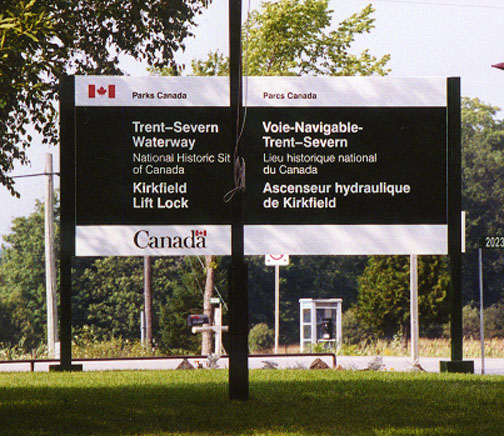
National Historic Site
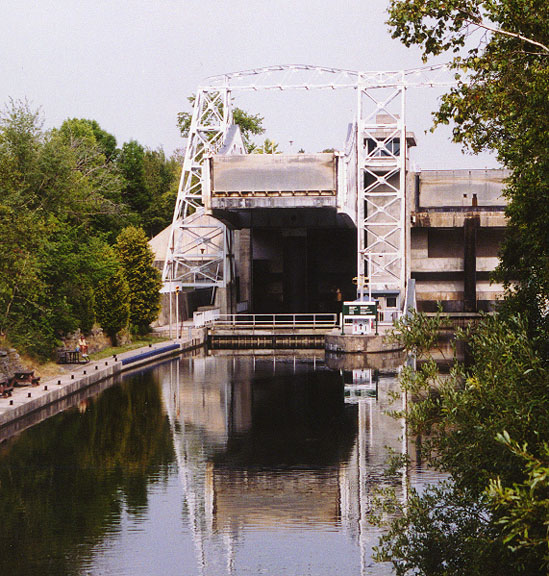
approaching the liftlock
This massive structure was constructed between 1896 and 1907. The
Kirkfield Liftlock operates as originally constructed except for the addition
of new hydraulic and electrical control systems in 1965-66.
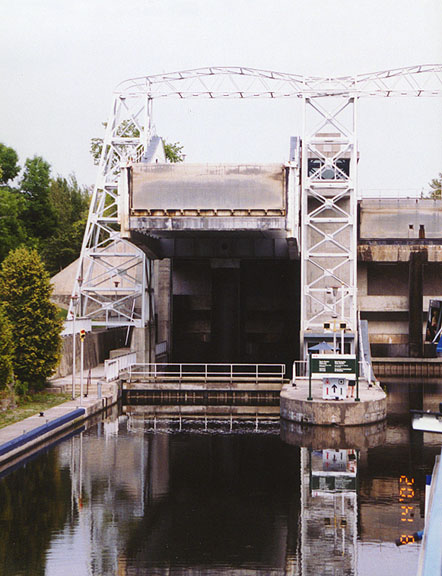
showing the piston holding the left
section high
The mechanism may be likened to a giant scale consisting of two chambers. When
an extra foot of water is added to the upper
chamber, and the crossover valves are opened, the heaver camber over-balances
the lower chamber forcing it to rise.
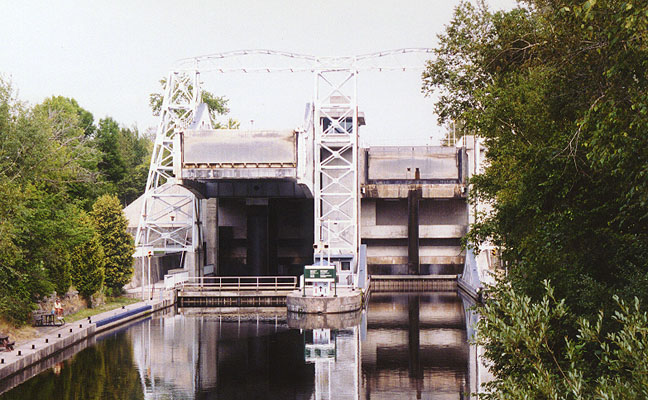
right side is low
Each chamber holds 228,093 gallons of water, weighing 1,700 tons. The weight
of he vessels in the chambers is irrelevant, as each vessel, by virtue of its
entry, has already displaced its weight in water before the gates were closed.
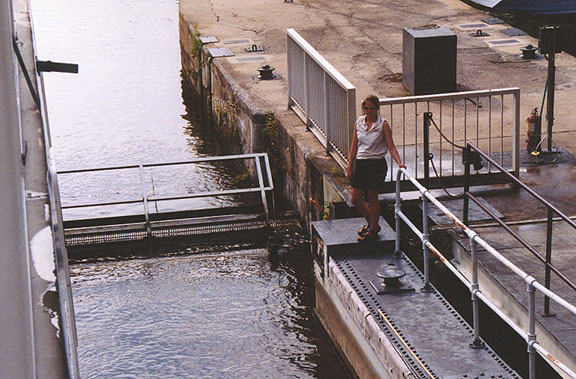
raising the gate after entering the
right side
Our ascent of 49 feet at the Kirkfield Liftlock brings us to the highest
elevation of the canal. Notice, as we reach the top, that the chamber stops
one foot short of the upper canal level, allowing one foot (144 tons) of water
to flow in when the hinged gate is lowered (opened). The chamber is now ready
for its next downward journey. Converse1y when a chamber reaches the
bottom, the water level in the chamber is one foot above the lower canal level
until the gate is opened allowing the water level in the chamber to drop which
prepares it for its next lift upward.
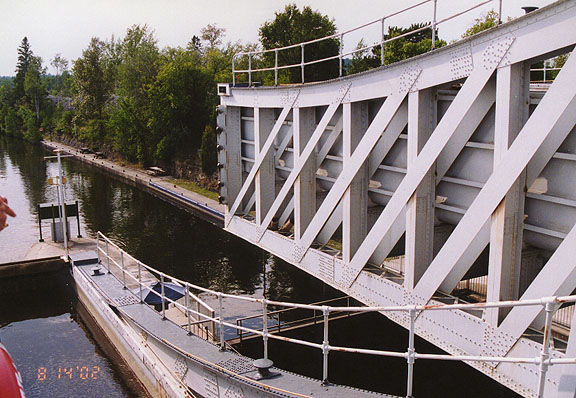
chamber is lifted
The concept of this liftlock and the Peterborough Liftlock were derived from
liftlocks built in England, Belgium and France in the 1870s and 1880s. The
Trent Canal Superintending Engineer, Richard B. Rogers felt that due to their
geographic locations, both sites would benefit from a lift, as opposed to the
conventional lock. Water conservation, cost, and lockage time were all
contributing factors. Originally, Rogers envisioned cargo transportation on
the Waterway being done by using strings of five to twelve barges towed by a
single vessel.
Photos of the Peterborough Liftlock
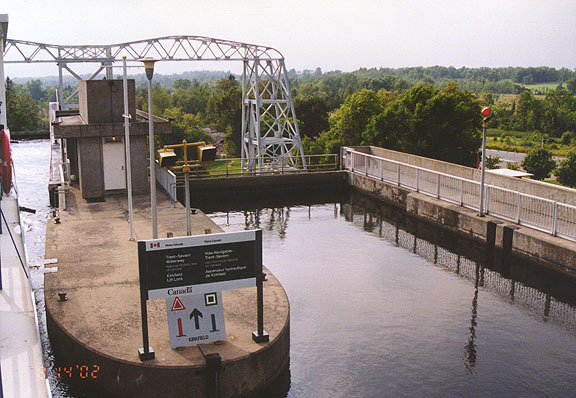
leaving the raised chamber
A sign, as we leave the lock, reminds
boaters that they are now traveling downstream and the relative position of
the buoys will be reversed.
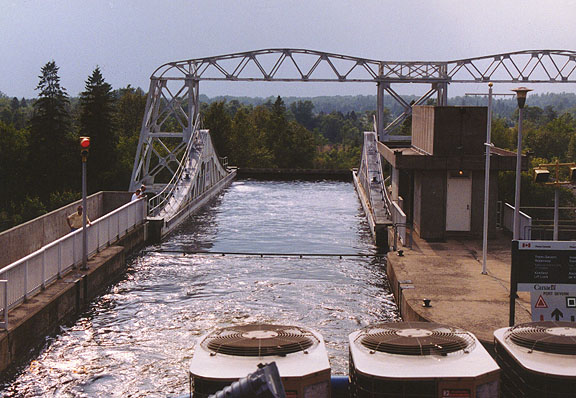
gate raising behind the vessel to
seal the chamber
Shortly after leaving the lock, there are bright blue guard gates on either
side of the canal. These gates are designed as a safety feature to protect the
liftlock in case of a sudden surge of water. The gates are shut at night and
can be c1osed to seal off the river even as water rushes through them in case
of an emergency.
Text by Ontario Waterways Cruises
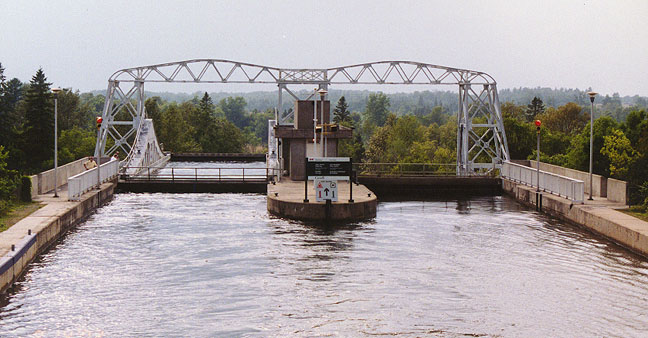
both gates closed

Return to Trent - Severn Waterway page
Return to Recent Adventures page



























Return to Canada page



















People and Places












![]()
![]()
![]()